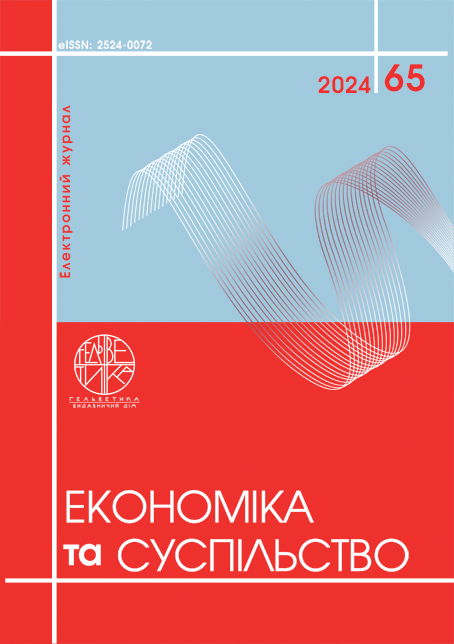METHODOLOGY OF CHANGE MANAGEMENT IN THE IMPLEMENTATION OF AUTOMATED TREASURY SYSTEMS
Abstract
The relevance of the chosen topic arises from the growing need to explore the automation of treasury systems in enterprises, given the rapidly changing external and internal environments of companies. This study investigates both the theoretical and practical aspects of automation, focusing on how new systems can adapt flexibly to these dynamic conditions. The research is rooted in a detailed examination of methodologies for change management during the implementation of automated treasury systems, ensuring that such transitions align with broader business strategies. The study’s methodology includes a thorough analysis of existing theoretical frameworks in the field of cash flow system automation, particularly in treasury management. Additionally, it draws on practical experiences from companies such as Severstal, JSC USC, and SMART-HOLDING, which have implemented systems like 1C, Finance 360°, and the integrated "Treasury" project. These cases provide valuable insights into the challenges and effective solutions for developing efficient cash flow management systems. The findings demonstrate that automated treasury systems are crucial for companies to manage their cash flows effectively. They enable firms to maintain control over key economic indicators while providing the flexibility needed to respond to fluctuating external and internal factors. Through the use of sophisticated methodological tools, these systems support strategic financial management and help companies stay competitive in a fast-paced environment. The conclusions of this study are highly relevant for students and professionals engaged in the study or practice of cash flow management and treasury operations in various organizational settings. The insights offered emphasize the importance of a well-implemented treasury automation system in ensuring financial stability and achieving long-term business success. Furthermore, the study presents practical recommendations for effectively implementing and adapting these systems to meet the evolving demands of the global business landscape.
References
Methodology for building a cash management system: connection between the treasury and the budgeting system. (2010). 1C-Rarus. Retrieved from https://rarus.ru/publications/122777/
Treasury automation: how to implement it “smartly? (2023). Severstal. Retrieved from https://severstalssc.com/mediacenter/articles/avtomatizatsiya-kaznacheystva-kak-realizovat-s-umom-16-01-2023-16-47ekspertyolga-krylovafinversia/
Experience in automation of treasury and budgeting: 1C: Trade Management + Finance 360°. SoftBalance. Retrieved from https://sb-vnedr.ru/blog/opyt-avtomatizatsii-kaznacheystva-i-byudzhetirovaniya-1c-upravlenie-torgovley-finansy-360/
What to consider if you automate the budget process. (2019). Axioma. Retrieved from https://axioma-soft.ru/about/news/chto-uchest-esli-avtomatiziruete-byudzhetnyy-protsess/
Automation of treasury work: Theoretical aspects of implementing 1C 8 and experience of practical application. 1C: Automation. Retrieved from https://www.avtomatizator.ru/articles/arkhivnye-novosti/avtomatizatsiya-raboty-kaznacheystva-teoreticheskie-aspekty-vnedreniya-1s-8-i-opit-prakticheskogo-pr/
Gavrilova, O.A. (2018). The enterprise treasury system is the main way to optimize financial flows. Economic Planning Department, (4).
Treasury automation in “1C:ERP”. (2022). 1C: Business Architect. Retrieved from https://www.1ab.ru/blog/detail/kaznacheystvo-v-1s-erp/
Budgeting and treasury. 1C: Franchisee. Retrieved from https://aventa-group.ru/klientu/stati/1s-finansovyj-uchet/byudzhetirovanie-i-kaznachejstvo/
Gilmiyarova, M.R. (2015). Development of methods for managing cash flows in a corporate structure. Bulletin of Perm University. Ser. “Economy, 3(26), 115-125.

This work is licensed under a Creative Commons Attribution 4.0 International License.


